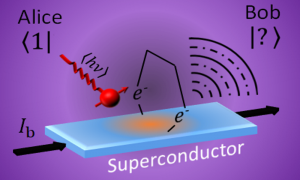There is currently a global effort to develop quantum devices, especially for encrypted communication and high-throughput computing. Quantum devices require suitable building blocks. Being quantum entities, single photons are excellent building blocks that are promising for successful development of quantum technologies. Hence, devices that can detect single photons fast and efficiently are vital for the successful development of the field.
In recent years, nanowires of superconducting materials have become a rather mature platform for detecting single photons, while outperforming competing technologies with respect to both speed and efficiency. Nevertheless, despite the massive development of superconducting nanowire single-photon detectors (SNSPDs), there is still great room for improvement, mainly becuase, to-date, a given SNSPD can be either fast or efficient, but not both simultaneously.
 In their paper, Itamar Holzman and Yachin Ivry demonstrate how the performance of SNSPDs can be optimized by means of device design and material properties.
In their paper, Itamar Holzman and Yachin Ivry demonstrate how the performance of SNSPDs can be optimized by means of device design and material properties.
Their work allows readers to realize the advantages and limitations of SNSPDs as necessary building blocks that can be utilized for a large span of existing and future quantum technologies. Moreover, the authors allow researchers who already work on developing SNSPDs as well as those who want to enter the field, to identify the opportunities and challenges in the development of SNSPDs.

















